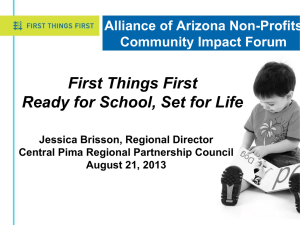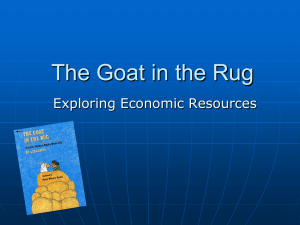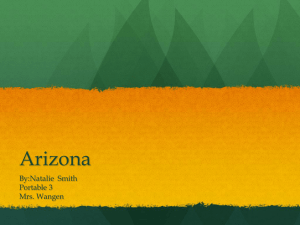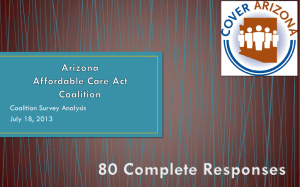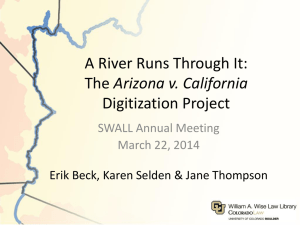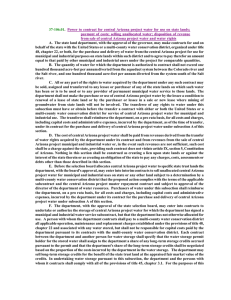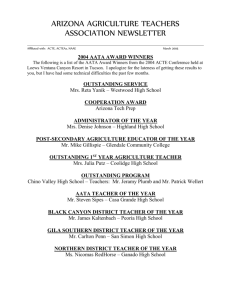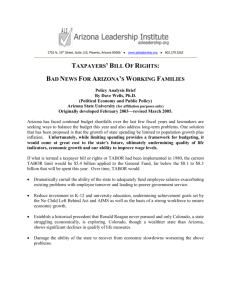Water Quality in Arizona
advertisement
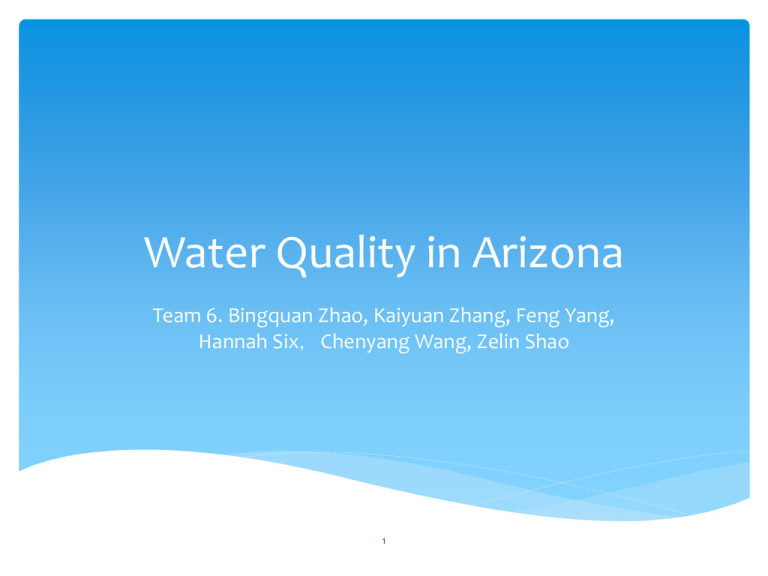
Water Quality in Arizona Team 6. Bingquan Zhao, Kaiyuan Zhang, Feng Yang, Hannah Six,Chenyang Wang, Zelin Shao 1 Overview Water supplies for Arizona Pollution Hazards Government Standards Current Technologies for water pollution control Advantages and disadvantages to the new and current technologies Suggestion for a better solution 2 Arizona Four Major Sources of Water The Colorado River Surface Water ( other than Colorado River) Groundwater Reclaimed Water 3 Surface Water Distribution 4 Water major use category 8 million acre-feet or 2.3 trillion gallons annually 5 Diseases that can be spread by chemical pollutants Skin infections Carcinogenic problems (by Nitrosamine) Damage to central nervous system (by Phthalates) Intestinal disorders (by Polychlorinated biphenyls) Anaemia, bone marrow damage, leukaemia (by Benzene) Disorders of liver, bone and circulatory system, birth anomalies (by Vinyl chloride) 6 Government Standards The Safe Drinking Water Act U.S. Environmental Protection Agency (EPA) sets standards for drinking water quality and oversees the states, localities, and water suppliers who implement those standards. The U.S. EPA has set standards for more than 80 primary contaminants that may occur in drinking water and pose a risk to human health 7 Where does Water come from • Snow and rain runoff from the watersheds in Arizona • Several dams • Colorado River 8 Government Responsibilities Ensuring that Arizona's public water systems deliver safe drinking water Identifying water pollution problems and establishing standards to address them Investigating complaints and violations of Arizona's water quality laws, rules and permits Issuing permits to protect Arizona waters from point sources of pollution Managing the quality of water resources through partnerships within the natural boundaries of the state's watersheds Monitoring and assessing the quality of surface and groundwater throughout the state Regulating the discharge and treatment of wastewater 9 Water Quality Division water quality permits Safeguard Arizona’s waters that are affected by pollutants that come from an identifiable source. For example: The Groundwater Section & Surface Water Section 10 Tradable Water Permits Firms are allowed “purchase pollution reduction credits from other sources that can generate the same reductions at a lower cost, thus achieving the same or better overall water quality improvement” (EPA). Currently operating in seven states across the nation, in the development process in four other states. Arizona Water Trading Programs No state trading programs in Arizona Few independent water quality trade initiatives in Arizona For example, a mining company cleaned up an abandon mine with the conditional trade of copper loading that was being released from the companies new mine 12 http://hercules.gcsu.edu/~sdatta/home/teaching/hydro/slides/population_water_arizona.gif 13 Conclusion Four major water sources in Arizona. Colorado river Surface water Groundwater Reclaimed water Pollution hazards health economy industrial and agricultural productions. Government control water quality. SDWA Tradable permits 14 Suggestions Preventing leakage of lubrication oil into rivers or lakes. Promoting clean production and built high-tech industry to reduce waste and pollution Building man-made water flow management system to enhances the self-purifying ability. Setting the inspected program to check water situation. Issuing permits to protect water sources. 15 Questions??? 16


